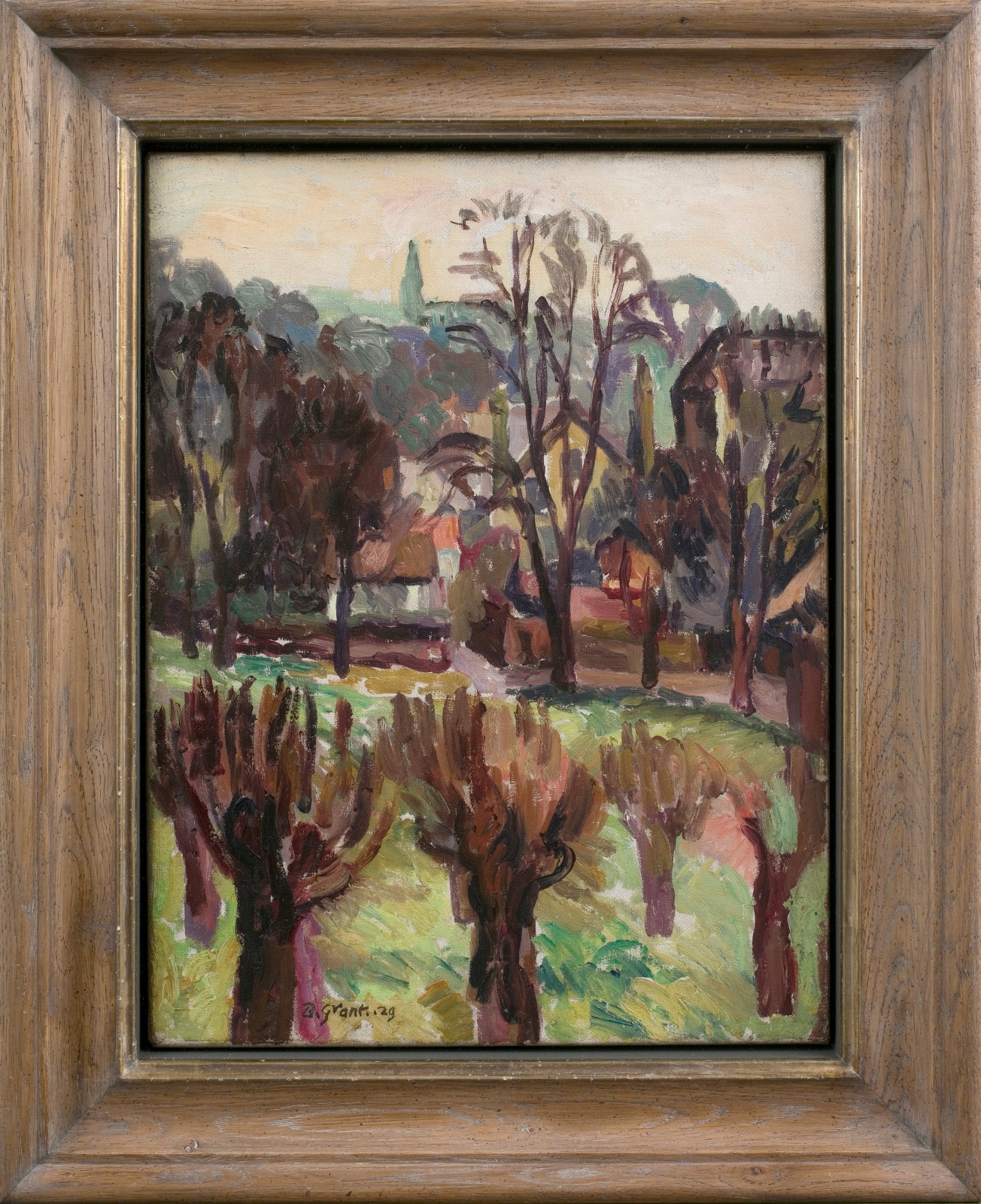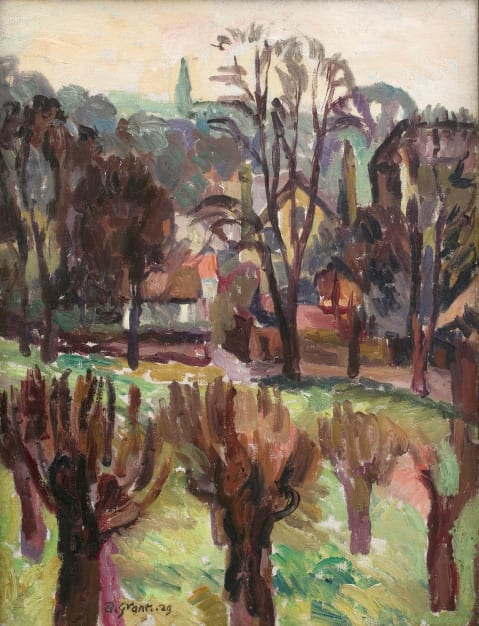A rural patch north of London has provided more than one English painter with rich material to make landscape into art.
InSight No. 153
Duncan Grant, Hampstead Heath, 1929
Once an unremarkable expanse of pleasant scrubland, useful for grazing and the provision of water and firewood, Hampstead Heath came to wider public attention as metropolitan London became bigger and dirtier through the late eighteenth and early nineteenth centuries. Although it had been depicted previously by the likes of William Mulready and Paul Sandby, proficient and recognised artists of their day, John Constable made it famous. He made of this landscape a personal subject matter, depicting it repeatedly and marrying it with dramatic skies bearing expressive, highly particularised cloud formations. From his various homes in Hampstead, eventually 40 Well Walk, he beat the bounds and studied the skies to produce an original landscape art borne of unprecedentedly assiduous observation.

For a generation and more, Constable’s image of the Heath was inescapable for those who followed in his footsteps. Its likeness is apparent in paintings by artists ranging from John Linnell, working in the eighteen-fifties, to Ernest Procter, working in the twenties. In Hampstead Heath, Flagstaff, a painting by William Nicholson who briefly lived in Pilgrim’s Lane in 1904–06, the residue of Constable’s personal vision is interestingly apparent. The titular flagstaff, complemented by the untypically vertical orientation of the canvas, is positioned off-centre with a gentle, whimsical tilt. But the picture’s true subject is sky, atmosphere, distant clouds receding towards the horizon, cumulus skating by overhead.

When Duncan Grant (1885–1978) came to paint plein air on the Heath in 1929, he brought with him a different suite of concerns. Although the Bloomsbury pantheon was more French than English, Constable had a place amongst the other gods. In Roger Fry’s Francophile outlook, he was a ‘great plastic designer’ and an Impressionist avant la lettre. Tellingly, during his lifetime, ‘it was France, not England, that understood his message’. But little effect of Constable’s work is apparent in Grant’s Hampstead Heath pictures. Instead of adopting an elevated position from which to survey the atmospheric distance beyond the Heath’s descending slopes, Grant looked east towards Highgate Hill and the spire of St Michael’s Church, which punctuates the horizon. Hampstead Heath was painted under a dazzling winter sun. The dormant grass has an unhealthy brilliance, the trees are leafless, and the warmth of Grant’s palette—mauve, viridian, pale vermilion—tempers the cold with Mediterranean colour.
Grant’s paintings of Hampstead Heath coincided with a period of romantic infatuation, and some of them were painted side-by-side with his new lover. George Bergen (1903–1984) was a naturalised American citizen born in Minsk, an aspiring painter, ‘addicted to all the sexes’, and for eighteen months or so, as Grant’s biographer Frances Spalding wrote, ‘Duncan’s emotional life hinged on this man’s existence’. ‘[B]y all accounts’, as Virginia Woolf described Bergen, he was ‘sheep headed, bird witted, and not nice’. Several of his paintings hung at Charleston where he spent time, and one of them, Peñiscola (c. 1932), as Richard Shone has noted, appeared in the background of Grant’s painting On the Table. But he was an acute source of anxiety to Grant’s partner Vanessa Bell, who feared that Duncan might leave for America with Bergen. As Grant expressed the predicament in a letter to his old friend Bunny Garnett, ‘[t]he truth is I want them both’. Amidst these sexual and emotional crosscurrents, Grant continued to paint—sometimes alongside both Bell and Bergen, as in 1930 when they spent a few weeks together in Cassis.

Grant’s manner of painting became increasingly fluent through the twenties and thirties. In paintings such as Hampstead Heath, the key lightened to a pitch of bright, prismatic colour. In contrast to his work made before 1919 or so, his brushwork grew ever less structured and more accommodating of his subject. The texture of his oil paint thickened and it was often applied with a loaded brush, creating a viscous impasto the legitimacy of which was underpinned by French Post-Impressionist precursors. Espousing his own variant of Constable’s naturalism, Grant was one of the most laurelled English artists of his generation whose paintings of the English landscape (and elsewhere) demonstrate a warm-hearted embrace of advanced French painting, southern heat and pan-European sensibility, and which implicitly rebut the pseudo-Constable nativism that enshrouded some English establishment art during the interwar years.
IMAGES
John Constable, London from Hampstead Heath, 1830, British Museum, London
William Nicholson, Hampstead Heath, Flagstaff, 1908, Bristol Museum & Art Gallery
Duncan Grant, Hampstead Heath, 1929, oil on canvas, 17 x 13 in (Framed)

